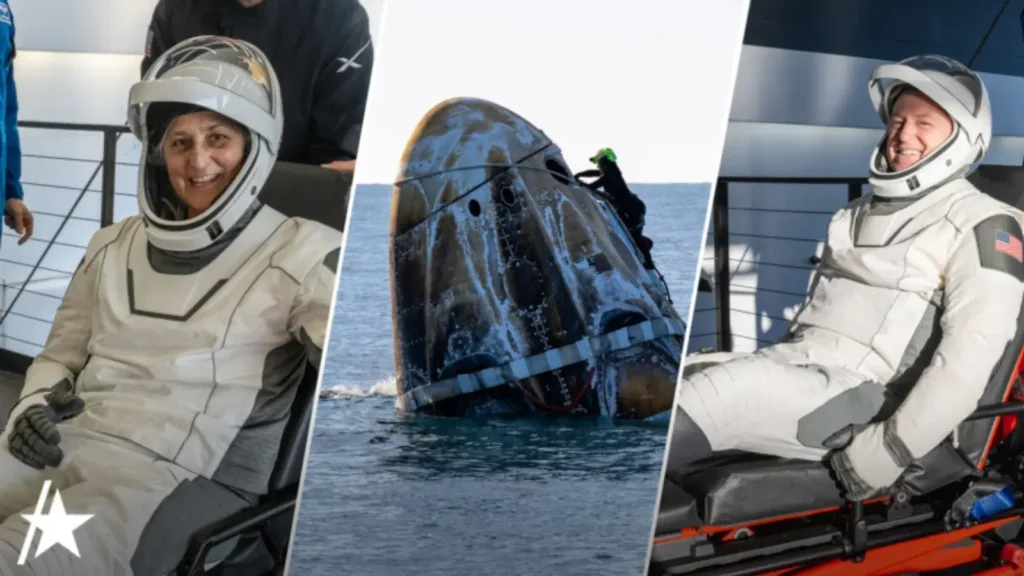
NASA astronaut Sunita Williams and her fellow astronaut Butch Wilmore have finally returned to Earth after an unexpected nine-month stay in space. What was supposed to be a short-duration mission turned into a prolonged experience due to unforeseen technical issues. However, beyond the headlines, several hidden details make this event even more intriguing. Let’s explore the lesser-known aspects of this space saga and uncover the real story behind their return.
Who Sent Them & Covered the Expenses?
Sunita Williams and Butch Wilmore were sent to space aboard Boeing’s Starliner under NASA’s Commercial Crew Program. This mission was intended to be a demonstration flight, proving the capability of Starliner to safely transport astronauts to and from the International Space Station (ISS). However, NASA funded this mission, with Boeing also bearing a significant portion of the costs as part of their contractual obligations. The unexpected delay led to increased expenses, but NASA ensured the astronauts’ safety remained a top priority.
The Mission That Went Wrong
Originally launched in June 2024, the Starliner spacecraft was expected to complete its mission within eight days. However, several technical malfunctions, including propulsion system failures and helium leaks, made it unsafe for the crew to return using the same vehicle. This forced NASA to extend their stay on the ISS until a safer alternative was arranged.
Hidden & Rarely Known Facts About the Return
1. The Longest Boeing Starliner Mission Ever
Williams and Wilmore’s mission was initially meant to last just over a week, but it turned into a record-breaking extended stay. This was the longest duration a Boeing Starliner crew has ever spent in space, highlighting unexpected technical flaws in the spacecraft.
2. Their Muscles & Bones Weakened Significantly
Spending nearly a year in microgravity takes a toll on the human body. NASA doctors have confirmed that both astronauts experienced muscle atrophy and bone density loss. Recovery will require an intense rehabilitation program lasting up to 45 days.
3. Unusual Space Diet & Health Impact
Unlike regular short-term astronauts, Williams and Wilmore had to modify their diet to sustain longer in space. They relied on high-protein meals and specific supplements to combat microgravity effects. They also faced an unexpected vitamin deficiency due to their prolonged stay.
4. Why They Couldn’t Stand After Landing
Immediately after returning to Earth, both astronauts struggled to stand. This wasn’t just due to zero gravity exposure—NASA’s special landing analysis confirmed that the spacecraft’s descent had an unusual gravitational pull, further affecting their balance.
5. The Role of SpaceX in Their Rescue
Since Boeing’s Starliner was unreliable for their return, NASA turned to SpaceX’s Dragon Freedom spacecraft for their safe return on March 18, 2025. This further reinforced SpaceX’s dominance in the commercial space industry over Boeing.
India’s Connection & The Grand Celebration
As Williams is of Indian descent, her return sparked major celebrations in India. Prime Minister Narendra Modi and ISRO (Indian Space Research Organisation) publicly congratulated her. Her ancestral village, Jhulasan in Gujarat, held a massive event to honor her achievements.
What’s Next for Sunita Williams?
After undergoing intensive rehabilitation, Williams is expected to resume her NASA duties. However, NASA has confirmed that she may not return to space anytime soon, as officials are currently reviewing future Starliner missions to prevent similar issues.
Final Thoughts
The return of Sunita Williams and Butch Wilmore is more than just another space mission—it’s a lesson in resilience, unexpected challenges, and the growing impact of private companies in space travel. The rare insights from their extended stay will help shape future long-duration space missions, ensuring better safety for astronauts venturing beyond Earth.
Stay tuned for more updates on Sunita Williams’ journey and the future of NASA’s space missions!

